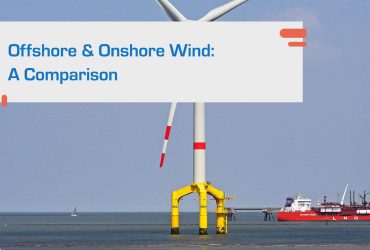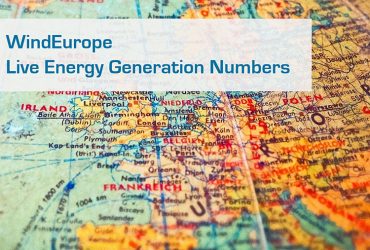
Wind Energy – Advantages and Disadvantages
Europe is expanding its offshore wind farms dotting the North Sea while China keeps adding more and more turbines to the world’s biggest wind park in Gansu. But what are the advantages of wind energy, which lead to big investments like these?
Pros
Aside from being a nigh infinite source of energy, wind power has sundry other benefits.
No fuel required
Wind energy doesn’t require any fossil fuel or biofuel, be it oil, gas, coal, or uranium. Hence, it avoids the negative environmental impact associated with the production of such fuel, viz. mining, transportation and fuel leaks.
No air pollution
Wind turbines produce a negligible amount of greenhouse gasses throughout their lifetime. In fact, manufacturing and installation are the only parts of the process which cause the release of these gases. In any case, the harmful effects of such gases are usually recouped within less than a year of clean operation.
No water required
Most conventional power plants operate on high pressure steam created by heating via fossil fuels or nuclear power. This not only has negative impacts on the environment due to the burnt fuel, but also wastes clean water used in the cooling cycle. Meanwhile wind turbines only require the presence of wind and they therefore avoid wasting drinking water.
Small footprint
Technically speaking, wind farms cover a large geographic area, but, since turbines are slender towers with a large rotor on top, their footprint on ground level is much smaller than that of any other energy source. Ergo, it is possible to install wind turbines between fields of crop and pastures without a negative impact on farming. Since wide open areas such as fields are optimal locations for wind turbines, due to the wind being non turbulent and unimpeded, they operate at high efficiencies. This allows farmers to contribute to the environment and earn money by either renting the small plots of land to power companies or even possibly by installing wind turbines by themselves and selling the energy produced.
Energy costs
As wind energy doesn’t require any fuel and the turbines can safely operate for over 20 years, combined with shrinking initial costs, the price of electricity produced by wind power plants is low and stable, independent of fluctuating fuel prices.
Economic impact
Wind energy provides many avenues by which it can stimulate economic growth. It provides various jobs, such as in the construction of the turbines themselves, the power lines and roads necessary to support them, as well as in maintenance and operation. Furthermore, it is independent of external fuel supply, but is instead tightly bound to the location, which leads to improvement of the local economy by providing jobs to well educated specialists.
Cons
If only these advantages were present without any disadvantages to sour the deal, no other energy source would be used. But alas, there are downsides to wind energy as well.
Intermittence
For a wind turbine to produce energy, there must be wind. Wind, however, varies greatly over time with storms and calms. When its speed is too low, the rotor doesn’t spin and the power plant cannot generate electricity. So, since the turbines effectiveness depends on the weather, wind has to be defined unreliable. To deal with these changes in output, it is necessary to integrate systems to store surplus energy in peak times and bridge lows, which inevitably increases costs.
Location
The infrastructure used to store energy is rarely the only one necessary for a wind turbine to operate effectively. Since buildings and other manmade structures obstruct airflow, most optimal wind locations are distant from cities and thus, consumers. The construction of the infrastructure between optimal wind sites and the consumer grid as well as the turbine itself, disrupt natural habitats and damage the environment the same way any large-scale construction would. The damage can only be mitigated by reclamation projects.
Noise
Naturally, when wind blows through the trees, noise is produced. However, most large modern turbines operate via lift, which leads to higher rotor speeds. These fast-moving rotor blades, operating at several hundred km/h create a lot more noise, both audible and infrasonic. Due to this loud noise, wind turbines cannot be built too close to people’s homes.
Complaints about infrasound, which can travel further than audible noise, are often unreasonable, as extreme scrutiny is put on wind turbines, while infrasound generated by cars is entirely disregarded and commonly accepted.
Shadow flicker
As the turbine rotates, the shadow of the rotor blades moves very quickly, creating a strobe effect. This effect can be agitating for humans and animals, which in turn means that putting a wind turbine next to the only pasture available to livestock might reduce their yield. To plants that makes no difference, crops are thus unaffected.
Radar interference
Horizontal wind turbines are large towers, and like all large towers, they interfere with radar. Because of that, there are restrictions about installing them in the vicinity of airports and military bases. The radar systems impacted by power plants will most likely be upgraded over the next couple of decades, forasmuch as resilience to wind turbines ought to be a major requirement for these innovative radar systems.
Damage to wildlife
Birds and bats can be killed by collisions with the fast-moving rotor blades of a wind turbine. However, this negative impact highly depends on the location of the turbine; when placed outside of large migration routes and nesting grounds, wind turbines are no more damaging to wildlife than skyscrapers of comparable size.
Conclusion
Most disadvantages of wind turbines can be greatly, sometimes even entirely negated in the planning stage, by simply choosing the right location and the right additional supplementary energy (often solar). How exactly that solution looks depends greatly on the circumstances.
Large energy providers tend to build wind farms, covering large swathes of land both onshore and offshore, consisting of many large horizontal axis turbines in order to maximise the energy production. Properties situated far away from the energy grid often rely on a combination of a smaller wind turbine and solar panels to have energy available while being off-grid. Businesses and private households supplement their electric grid with a turbine in their yard or on their roof to reduce their energy costs. Even ships are returning to wind power, though not with conventional sails but Flettner rotors, rotating cylinders creating thrust via the magnus effect. This allows modern ships to minimize fuel consumption by supplementing existing power plants with these systems. Sailing yachts too often feature small wind turbines to provide electricity for use onboard.
For every situation there is a right combination of wind turbines and other systems to cover one’s needs.
Related Content
Wind farms can be built both onshore and offshore to harvest wind energy and generate sustainable electricity. The difference between the two locations comes with...
Renewable energy is, without a question, one of the European Union’s biggest development goals in the 21st century. Between 2004 and 2017, the share of...

